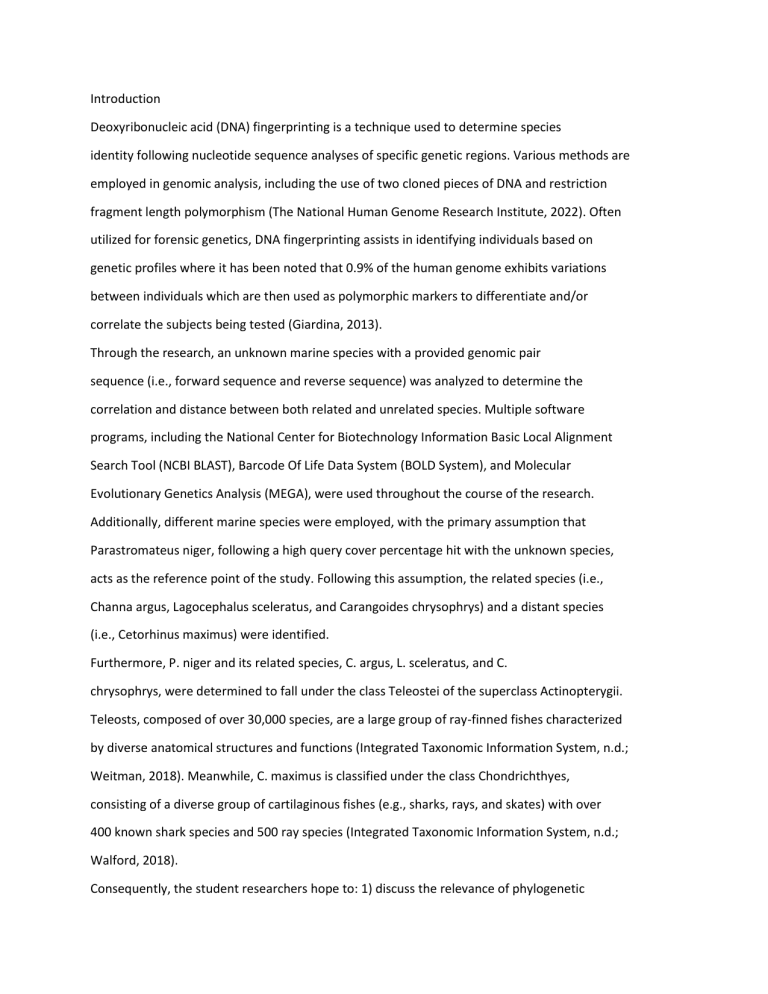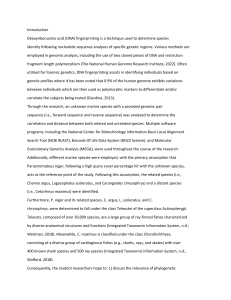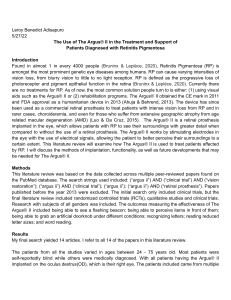
Introduction Deoxyribonucleic acid (DNA) fingerprinting is a technique used to determine species identity following nucleotide sequence analyses of specific genetic regions. Various methods are employed in genomic analysis, including the use of two cloned pieces of DNA and restriction fragment length polymorphism (The National Human Genome Research Institute, 2022). Often utilized for forensic genetics, DNA fingerprinting assists in identifying individuals based on genetic profiles where it has been noted that 0.9% of the human genome exhibits variations between individuals which are then used as polymorphic markers to differentiate and/or correlate the subjects being tested (Giardina, 2013). Through the research, an unknown marine species with a provided genomic pair sequence (i.e., forward sequence and reverse sequence) was analyzed to determine the correlation and distance between both related and unrelated species. Multiple software programs, including the National Center for Biotechnology Information Basic Local Alignment Search Tool (NCBI BLAST), Barcode Of Life Data System (BOLD System), and Molecular Evolutionary Genetics Analysis (MEGA), were used throughout the course of the research. Additionally, different marine species were employed, with the primary assumption that Parastromateus niger, following a high query cover percentage hit with the unknown species, acts as the reference point of the study. Following this assumption, the related species (i.e., Channa argus, Lagocephalus sceleratus, and Carangoides chrysophrys) and a distant species (i.e., Cetorhinus maximus) were identified. Furthermore, P. niger and its related species, C. argus, L. sceleratus, and C. chrysophrys, were determined to fall under the class Teleostei of the superclass Actinopterygii. Teleosts, composed of over 30,000 species, are a large group of ray-finned fishes characterized by diverse anatomical structures and functions (Integrated Taxonomic Information System, n.d.; Weitman, 2018). Meanwhile, C. maximus is classified under the class Chondrichthyes, consisting of a diverse group of cartilaginous fishes (e.g., sharks, rays, and skates) with over 400 known shark species and 500 ray species (Integrated Taxonomic Information System, n.d.; Walford, 2018). Consequently, the student researchers hope to: 1) discuss the relevance of phylogenetic and genomic data softwares in species identification, 2) illustrate the evolutionary relationship between identified marine species through a phylogenetic tree diagram, and 3) identify the implications of genetic research in a socio-economic and ecological perspective.








